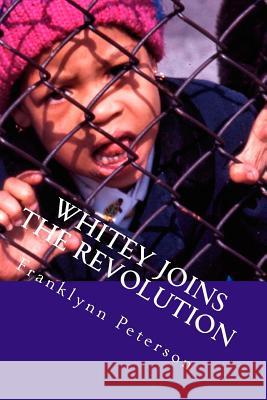Whitey Joins the Revolution: My Time With the Movement » książka
Whitey Joins the Revolution: My Time With the Movement
ISBN-13: 9781492722625 / Angielski / Miękka / 2013 / 224 str.
Meet "Whitey," in reality Franklynn Peterson. For many of his growing years, he lived in a segregated paper mill town in central Wisconsin. But as a U. Wisconsin senior (mentored by Jesse Jackson's #1 associate, Ed Ridick), he reignited the local Madison, WI, civil rights movement and was encouraged by future Wisconsin Republican Congressman Bill Steiger. His modest spark grew into a Northern Student Movement supporting Southern sit-ins. Next, in New York City, he worked with the infamous Brooklyn chapter of CORE (Congress of Racial Equality) alongside Sony Carson and future New York Democratic Congressman Major Owens. Franklynn's pro bono photos of kids in decrepit housing hooked him on activism. But he saw greater need for positive photo-journalism about Civil Rights for family publications. Independently, he brought the good folks and good stuff fit to print about why civil rights was vital to the whole USA to millions of middleclass readers weekly where hearts and minds might be swayed. His story about activism is required reading for today's citizens of any color Mr. Peterson, "Whitey," produced lively and literate photo-journalism independently for a Sunday magazine syndicate that included newspaper as large as the Boston Globe, New York City Daily News, Miami Herald, Chicago Tribune, Columbus Dispatch, Detroit Free Press, Houston Chronicle, Dallas Morning News, Memphis Courier Dispatch. Also for an African-American pictorial monthly, Sepia, and a liberal Catholic weekly, Ave Maria, published at Notre Dame University. A Dutch-based photo agency re-sold "Whitey's" photo-journalism to European giants such a Elle, Stern, and London tabloids. He averaged nearly four stories a month and each averaged circulations in the millions. He was able to remain free of political or other influence from leaders of any Civil Rights or other organization since his fees for his stories paid his expenses and family support handsomely. Peterson's wall is bedecked with awards from the National Press Club (two consecutive years "Distinguished Journalism" award), Brotherhood in Media Award, Jesse H. Neal Award, and a Palm D'or from the Oberhauser Film Festival for a documentary film he helped produce. Photos from his often dangerous coverage of highly charged issues are still sought by publications and art galleries. In fact, "Whitey" spent time in jail for covering a police crack-down of possible protestors. His photos have hung in art galleries from coast to coast.
Zawartość książki może nie spełniać oczekiwań – reklamacje nie obejmują treści, która mogła nie być redakcyjnie ani merytorycznie opracowana.











